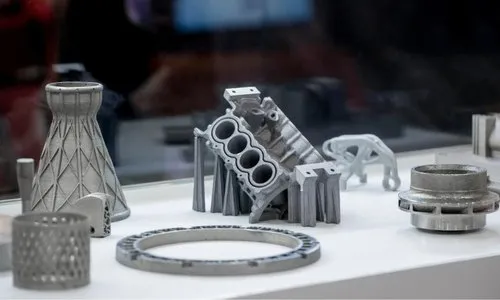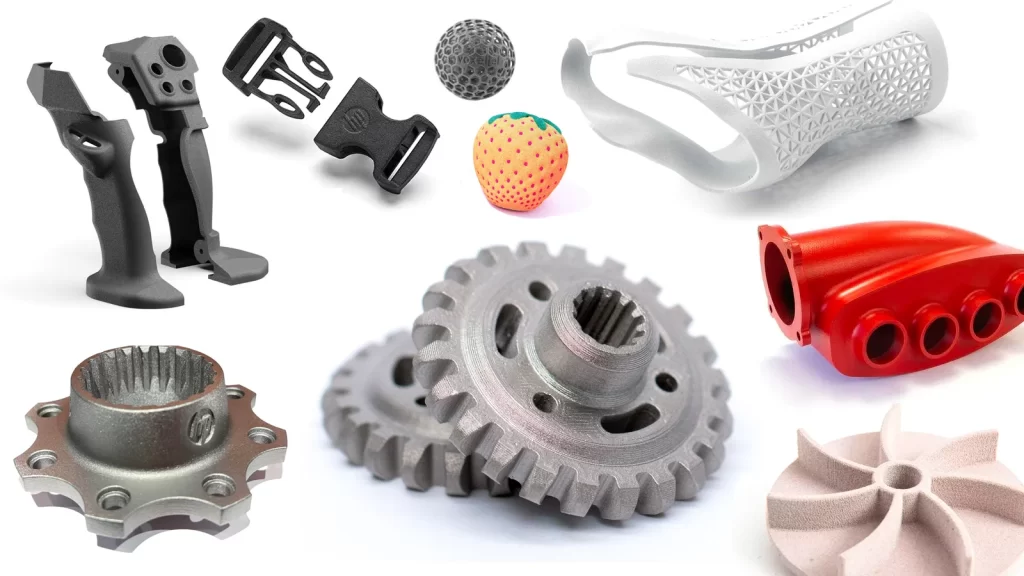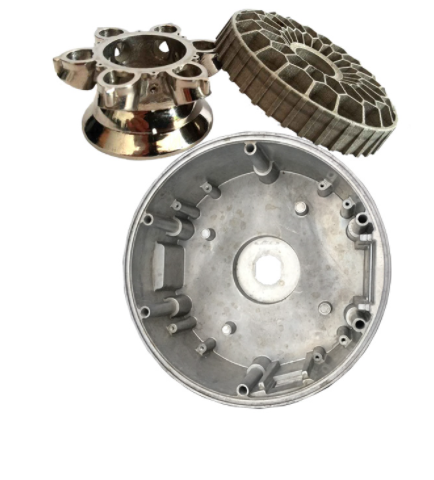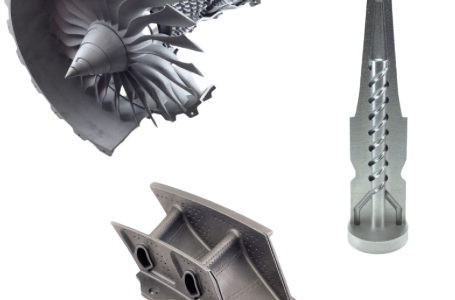Custom Metal 3D Printing
Metal 3D printing can be used in various industries, including aerospace, automotive, medical, and tooling, to produce both functional prototypes and end-use parts. It utilizes a variety of metals such as titanium, aluminum, stainless steel, and others, depending on the application and material properties required.
What is Metal 3D Printing?
Metal 3D printing, also known as metal additive manufacturing, is a process where metal parts are created layer by layer directly from a 3D CAD model. Unlike traditional subtractive manufacturing methods, where material is removed from a solid block, metal 3D printing builds parts up, adding material only where needed. This method allows for the creation of complex geometries, lightweight structures, and high-performance parts that would be difficult or impossible to produce using conventional methods.
Advantages of Metal 3D Printing
Complex Geometries
Metal 3D printing allows for the creation of parts with highly complex and intricate geometries, including internal structures, lattice designs, and organic shapes that would be impossible to achieve with traditional manufacturing methods.
Reduced Material Waste
Unlike subtractive manufacturing, where material is removed from a solid block, metal 3D printing only adds material where needed. This significantly reduces material waste, making the process more environmentally friendly and cost-effective, especially for expensive materials.
Customization and Optimization
Parts produced by PolyJet 3D printing come out with a smooth, polished surface finish that requires minimal post-processing. This makes it ideal for creating aesthetically pleasing prototypes, models, and even end-use parts that need to have a professional look and feel.
High-Performance Materials
Tool-less Production
PolyJet 3D printing is known for its fast printing speed. This allows for rapid prototyping, faster iteration cycles, and quicker time-to-market for products, making it highly efficient for design validation and testing.
Consolidation of Parts
Complex assemblies that would traditionally require multiple parts can be consolidated into a single, integrated part, reducing the number of components, the need for assembly, and potential failure points.
Metal 3D Printing
Direct Metal Laser Sintering (DMLS) 3D Printing Service
Direct Metal Laser Sintering (DMLS) is an additive manufacturing process that uses a high-powered laser to selectively fuse metal powder layer by layer to create fully dense metal parts. DMLS is capable of producing intricate designs and complex internal structures that are challenging or impossible with traditional manufacturing methods like CNC machining.

Metal Binder Jetting 3D Printing Service
Metal Binder Jetting is an additive manufacturing process that uses a liquid binder to selectively bond layers of fine metal powder. After printing, the green part is subjected to a debinding and sintering process in a furnace to achieve full density and strength. Unlike laser-based metal 3D printing (like DMLS), Metal Binder Jetting does not require high-energy lasers, making it more efficient for larger production runs.

Choosing Between DMLS or Binder Jet Metal
When deciding between DMLS (Direct Metal Laser Sintering) and Binder Jet Metal Printing, it’s important to understand the key differences in the processes, material compatibility, cost, and application suitability for your specific project. Both are popular metal 3D printing technologies, but they are suited for different use cases and have distinct advantages and limitations.
Overview of Direct Metal Laser Sintering
DMLS (Direct Metal Laser Sintering)
- Process: DMLS uses a high-powered laser to selectively melt and fuse metal powder particles together, layer by layer, based on a 3D CAD model. The part is built in a powder bed, and each layer is sintered or fully melted to create a solid part.
- Materials: DMLS supports a range of metal alloys, including stainless steel, titanium, aluminum, Inconel, cobalt-chrome, and more.
- Key Feature: DMLS produces fully dense, high-strength parts, which are often used in industries like aerospace, automotive, medical, and tooling.
Overview of Binder Jet 3D Printing
Binder Jet Metal Printing
- Process: In Binder Jetting, a liquid binder is jetted onto metal powder particles, bonding them together in the shape of the part layer by layer. After printing, the part undergoes a post-processing step known as “debinding” and then sintering to fuse the metal powder particles together into a solid part.
- Materials: Binder Jetting typically uses a wide variety of metal powders, such as stainless steel, aluminum, titanium, and copper.
- Key Feature: Binder Jetting allows for faster printing speeds and lower material costs, but the parts require post-processing (such as sintering) to reach their final properties.
Direct Metal Laser Sintering Material Properties
- Aluminum AlSi10Mg
- Stainless Steel 17-4
- Stainless Steel 316/L

Metal Binder Jetting Material Properties
- X1 Metal 420i (420 stainless infiltrated with bronze)
- Six finishes available

Applications of 3D Printing
Metal 3D printing is ideal for rapid industrial tooling, enabling the production of parts with complex curvatures and intricate geometries, such as conformal jigs and fixtures, stamps, dies, and cutting inserts. This technology allows for the creation of components that are difficult or impossible to manufacture using traditional methods.
In industries like consumer products, robotics, aerospace, and defense, metal 3D printing is used to create integrated fastening features, end-effectors, and lightweight metal lattice structures. The high durability and strength of metal 3D printed parts make them suitable for fully functional late-stage prototypes or end-use components, offering significant benefits in performance, design flexibility, and reduced lead times.
Why Choose Avinyaworks for 3D Printing?
Endless Options
Choose from millions of possible combinations of materials, finishes, tolerances, markings, and certifications for your order.
Easy to Use
Get your parts delivered right to your door without the hassle of sourcing, project management, logistics, or shipping.
Quality Assurance
Our quality check includes visual inspection, dimensional verification, functionality testing (if applicable), and a review of surface finish.

